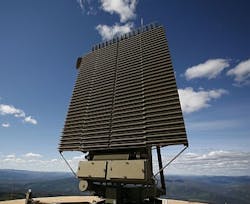MOUNTAIN VIEW, Calif., 17 Aug. 2011.Radar spending in the U.S. Department of Defense (DOD) budget should grow by 1.6 percent each year through 2016, predict analysts at market researcher Frost & Sullivan in Mountain View, Calif. The 2011 DOD radar budget is about $2.47 billion -- a $211.8 million increase over 2010 enacted levels -- and represents about 5.7 percent of total U.S. military spending on command, control, communications, computers, intelligence, surveillance, and reconnaissance (C4ISR), Frost & Sullivan analysts say.Driving U.S. military radar spending is the need for continued improvements in radar size, weight, and power (SWaP), bandwidth efficiency, detection, cross cueing to other types of sensors, and data collaboration, Frost & Sullivan analysts say in the report entitled U.S. DOD Radar Markets.Today's manned surveillance aircraft, such as the airborne warning and control system (AWACS), and the Joint Surveillance and Target Attack Radar System (Joint-STARS) are approaching the end of their service lifetimes and will require new investments in radar technologies to replace and upgrade, analysts, say. Military radar manufacturers have opportunities in maintenance, logistics, engineering, integration, and training, especially for deployed systems and software upgrades, Frost & Sullivan analysts say.
Continuous combat operations since 2001 have driven the need for replacement equipment, and DOD leaders will continue relying on the large systems integrators to build and manage complex radar systems. Research, development, test & evaluation (RDT&E) is the largest radar contracting category with $1.21 billion in 2011, but radar RDT&E in the DOD budget is shrinking at 0.3 percent each year, analysts say.
Radar procurement, however, is growing at about 4 percent each year through 2016 as new systems deploy and current equipment is upgraded and replaced. Some radar upgrades such as for the F-15E jet fighter-bomber will be postponed along with some naval aircraft and ship radar maintenance, analysts say.
Overall trends in DOD radar technology will see fewer radar systems of all kinds, and the military's radar attention will focus on proven, reliable designs that can be upgraded easily, analysts say. For more information contact Frost & Sullivan online at www.aerospace.frost.com.
Related stories
-- Radar technology looks to the future;
-- Warship radar technology designers set sights on next-generation Navy cruiser; and
-- http://www.militaryaerospace.com/index/display/article-display/7977924507/articles/military-aerospace-electronics/online-news-2/2010/6/navy-looks_to_vista.html.
